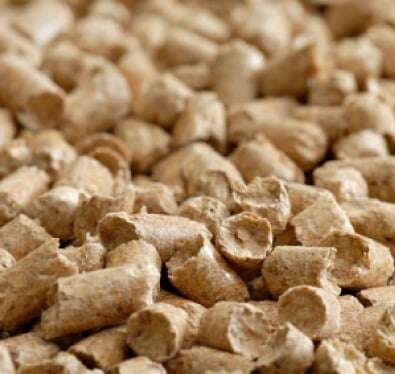3 min read
European Parliament Recognizes Primary Woody Biomass as a Renewable Energy Source
John Greene
:
Sep 21, 2022 12:00:00 AM

On September 14, the European Parliament voted to recognize primary woody biomass as a renewable energy source, which is consistent with its prior classification under both the first Renewable Energy Directive (RED) and RED II.
The decision will allow primary woody biomass to continue counting towards already-established renewable energy targets. However, the decision also adopted amendments calling for phasing down the share of primary wood biomass counted as renewable energy. As Erin Voegele at Biomass Magazine noted in her coverage of the decision, “Under the proposal, the energy share from solid biomass fuels derived from primary woody biomass cannot exceed the share of the overall energy consumption of the average of such fuel in 2017-2022, based on the latest available data.”
Voegele continued:
The proposals define primary wood biomass to include all roundwood felled or otherwise harvested or removed. This includes all wood obtained from removals, such as the quantities removed from forests, including wood recovered due to natural mortality and from felling and logging. It also includes all wood removed with or without bark, including wood removed in its round form, or spit, roughly squared or in other forms, such as branches roots and stumps, along with wood that is roughly shaped or pointed. The definition of primary wood biomass does not include woody biomass obtained from sustainable wildfire prevention measures in high-risk fire prone areas, wood biomass obtained from road safety measures, and woody biomass extracted from forests affected by natural disasters, active pests or diseases to prevent their spread, while minimizing wood extraction and protecting biodiversity.
Markus Pieper, Member of Parliament (MEP) leading on RED III, added: “One thing is clear: wood-based biomass is a building block of the energy transition and, despite the vote of left-green Members of the European Parliament, can still be counted as renewable energy. The new directive will set the necessary framework to achieve the greatest possible CO2 reduction effect and not to ensure that our forests are burned in the future. I am counting on the member states to follow our proposals as the procedure progresses."
Mixed Industry Reactions
As Bioenergy Insight noted, industry reaction to the decision has been mixed:
- “Enviva, one of the world’s leading producers of sustainably sourced woody biomass, welcomed the designation, saying it marks a critical step in the right direction toward more low-carbon, drop-in alternatives to fossil fuels for power and heat generation, as part of an all-in renewables strategy to reduce carbon emissions and limit global dependence on fossil fuels.
- “However, Bioenergy Europe said the lack of support for primary woody biomass was ‘concerning’ – ‘this new measure will make bioenergy from primary woody biomass the only renewable source not eligible for support, creating an uneven playing field with other solutions, and this is not acceptable,’ it commented.”
A ‘Win’ for Common Sense
Europe’s largest single source of renewable energy is sustainable biomass, which is a cornerstone of the EU’s low-carbon energy transition. Seeking to accelerate this transition, the European Commission has proposed a series of ambitious new goals to achieve by the end of the decade, including:
- Reducing greenhouse gas emissions by 55% from 1990 levels
- Decreasing consumption of coal by 70% and gas by 25% from 2015 levels
- Increasing the share of renewable energy to 38-40%
For the last decade, forest resources in the US South have helped to meet these goals—as they will in the future. This heavily forested region exported over 7 million metric tons of sustainable wood pellets in 2021 – primarily to the EU and UK - and is on pace to exceed that number in 2022 due to the ongoing war in Ukraine, which has pinched trade flows of industrial wood pellets from Russia, Belarus and Ukraine.

There are five important principles to help understand what constitutes sustainable biomass, how it supports forest growth in the US South, and how it can contribute to achieving the European Parliament’s climate goals.
- Sustainable biomass is sourced from forests where forest inventory and carbon stocks are stable or increasing. Steady increases in forest inventory mean emissions from biomass are quickly sequestered by the continually growing forest landscape from which it is sourced.
- In the US, sustainable biomass represents a tiny fraction of the forest products industry. Each year, only 4% of the forest is harvested in this region leaving the remaining 96% to keep growing. Of that 4% that is harvested, just 3% is used for biomass.
- Forests tracts in the US Southeast are not clear-cut exclusively for biomass. Wood from a single tract of land typically supplies multiple markets, including sawmills, solid wood products, pulp and paper, and bioenergy, among others.
- Sustainable biomass is produced from low-value wood that is created as a by-product of a traditional timber harvest. Forest tracts are typically managed for high-value sawtimber, which generate the most revenue for landowners. Some trees that do not meet the specifications for sawtimber are cascaded for use as biomass, which is in keeping with the principle of using wood fiber for its greatest climate benefit.
- Biomass is a small market but helps forest owners keep planting trees. Private citizens own 86% of the forestland in the US Southeast. Strong demand for forest products, like biomass, incentivize landowners to continue the cycle of planting and harvesting, versus converting their forestland to other, more lucrative uses. This demand helps landowners preserve and manage their forest to promote wildlife and biodiversity in the region.
Renewable forest resources should be a natural option for parts of the EU as a sustainable and cost-stable feedstock, which would largely act as a “bridge” fuel until more efficient and less expensive forms of renewable energy avail themselves. And contrary to some of the prevailing—and wildly misleading—narratives regarding the nature of biomass feedstocks, utilizing low-value forest resources for the production of wood pellets is actually beneficial for long-term forest sustainability.
Unlike fossil energy markets, woody biomass offers a stable supply at low costs, which allows power producers the ability to sign long-term agreements that can help fund new plant infrastructure and incents timberland owners to keep forestlands forested while investing in advanced timber management practices.





